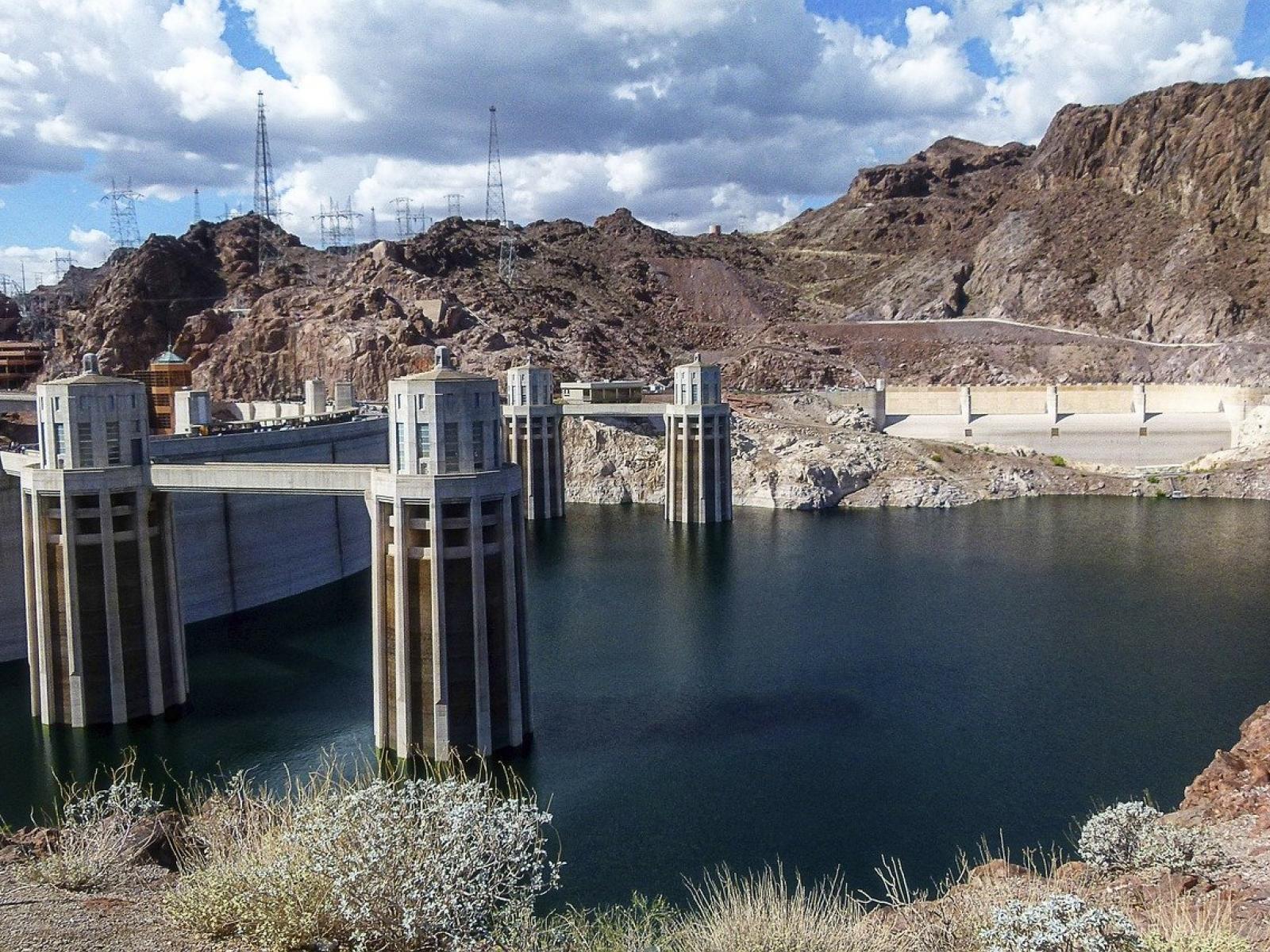River Regulation Alleviates Thermoelectric Power Loss Induced by Warming
An integrated water model quantifies the impact of water management on thermoelectric power plant generation.

A new model quantifies the impact of managing cooling water to control future power plant emissions. Credit: Image by ArtTower from Pixabay
The Science
Thermoelectric power plants that require cooling account for 85 percent of electricity generation in the United States. Often, plants draw cooling water from nearby rivers and streams, so elevated stream temperature in the future threatens to reduce thermoelectric power generation capacity. Although regulations affect about 98 percent of the rivers and streams in the U.S., the impacts of water management on stream temperature and thermoelectricity production have not been evaluated in previous studies. Scientists at the U.S. Department of Energy’s Pacific Northwest National Laboratory and University of Houston used a state-of-the-art integrated water cycle model to quantify the impacts of river regulation on stream temperature and usable capacity of once-through thermoelectric power in the U.S. They found that by lowering stream temperature and increasing water availability during the low-flow season, river regulation can curtail the loss of summer power plant usable capacity induced by warming in the future.
The Impact
Historically, high water temperature at the inlets of power plants has been a major reason for curtailing or shutting down of power plants in the U.S. because the warm water reduces cooling efficiency. Warming projected for the future has been shown to reduce thermoelectric power generation due to a combination of higher stream temperature and lower summer flow, but previous studies ignored the impacts of water management on streamflow and stream temperature. This study is the first to show not only that flow regulation can curtail power loss induced by future warming, but also that its effect is comparable to emission control that reduces future warming. This study highlights the need to incorporate water management effects in thermoelectricity power vulnerability assessments.
Summary
To quantify the relative impacts of future warming and water management on thermoelectric power generation in the U.S., this study used a modeling framework that represents water management, land surface hydrology, and mass and heat transport in the rivers in a physically based and coherent way. The modeling framework couples the Community Land model with the Model for Scale Adaptive River Transport model to represent streamflow and stream temperature. These results are also coupled with a water management model that simulates flow regulation by reservoirs and water extraction. Water demand was simulated by the Global Change Assessment Model and thermoelectric power generation was simulated by the Thermoelectric Power Generation Model. Simulations were performed for the historical period and future period following two emissions and land use land cover scenarios for the future: a business-as-usual Representative Concentration Pathway (RCP) 8.5 scenario and an emission mitigation scenario RCP4.5.
Analysis of the simulations showed that water management through reservoir operations increases summer flow and reduces stream temperature. Both the increase in water availability and the reduced stream temperature contribute to alleviating the effects of future warming on thermoelectric power production in the U.S. Results showed that regulation of stream temperature alone can alleviate the losses of once-through power plant capacity by up to 12 percent. Combined with regulating streamflow that affects water availability, power losses are reduced by up to 24 percent in the future. Comparing the power losses under the RCP8.5 and RCP4.5 scenarios with and without water management, this study showed that flow regulation has comparable effects to emission control on alleviating future thermoelectric power losses due to warming.
PI Contact
Jennie Rice, Pacific Northwest National Laboratory, jennie.rice@pnnl.gov
Funding
The U.S. Department of Energy Office of Science, Biological and Environmental Research supported this research as part of the MultiSector Dynamics, Earth and Environmental System Modeling Program.
Published: February 7, 2020
X. Zhang, H.-Y. Li, L. R. Leung, L. Liu, M. I. Hejazi, B. A. Forman, and W. Yigzaw, “River Regulation Alleviates the Impacts of Climate Change on U.S. Thermoelectricity Production.” Journal of Geophysical Research: Atmospheres, 125, e2019JD031618 (2020). DOI: 10.1029/2019JD031618